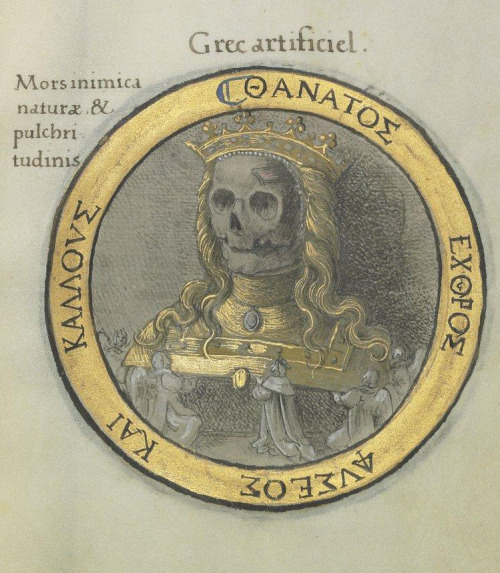
Bibliothèque nationale de France, Français 24955, f.72r. François Rochefort, La vie de la belle et clere Magdalene. Early 16th century.
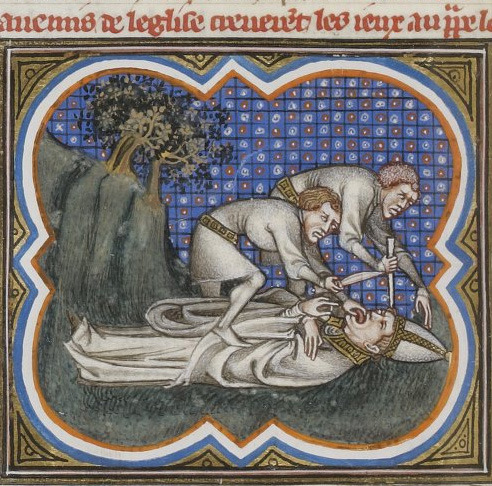
Bibliothèque nationale de France, Français 2813, detail of f.95v. Grandes chroniques de France de Charles V. Paris, c.1375-1380.
Two ruffians attempting to gouge out Pope Leo III’s eyes and cut off his tongue.

Bayerische Staatsbibliothek, BSB Cgm 8010 a, detail of f.8. Furtmeyr-Bibel (Deutsche Bibel AT, Genesis - Ruth). 15th century. Artist: Berthold Furtmeyr.
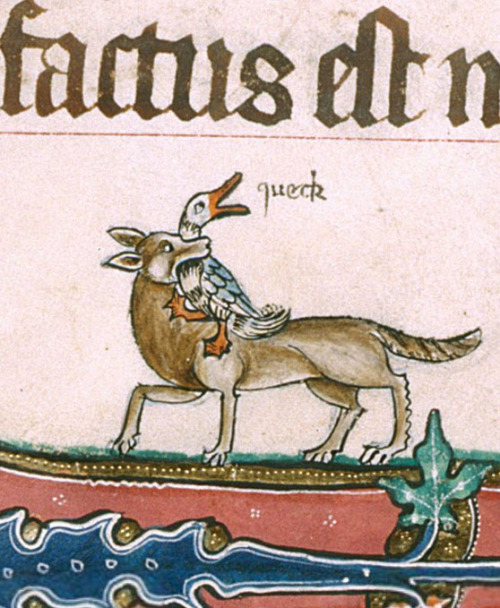
British Library, Add 49622, f. 190v. The Gorleston Psalter. 1310-1324

British Library, Add 49622, f. 61r. The Gorleston Psalter. 1310-1324

British Library, Add 49622, f. 133r. The Gorleston Psalter. 1310-1324.

British Library, Add 49622, f. 133r. The Gorleston Psalter. 1310-1324.
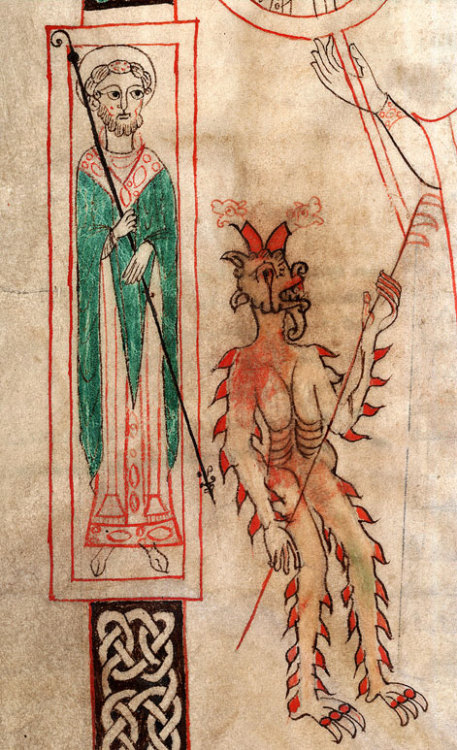
Douai, B. m., ms. 0301, f. 001v. Gregory, Moralia in Job. Flanders, 1st quarter of the 12th century.
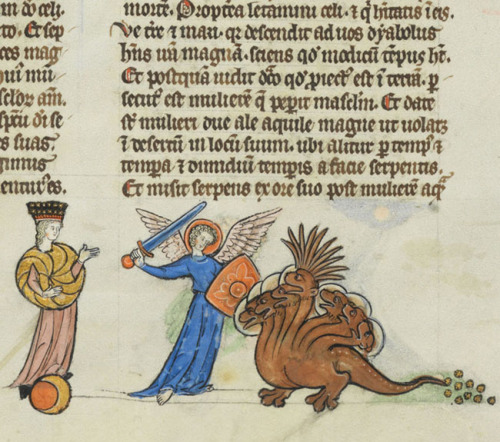
Lausanne, Bibliothèque Cantonale et Universitaire, U 964, detail of f. 480v (woman clothed with the sun, dragon with seven heads). Biblia Porta. Franco-Flemish, end of the 13th century.
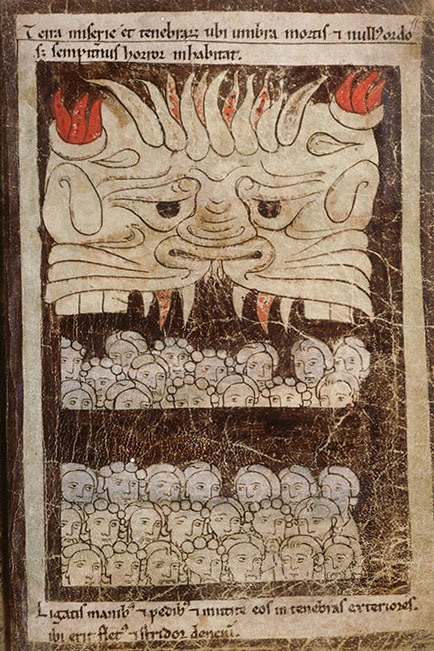
Amiens - BM - ms.0108, f. 255. Bible. Pamplona, 1197.
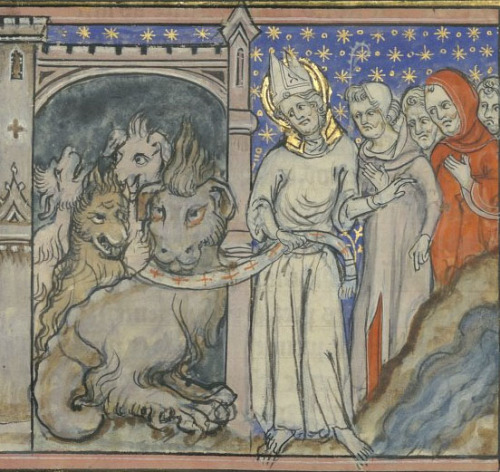
Bibliothèque de l’Arsenal, Ms-5080 réserve, f. 75r (St Clement of Metz and the dragon). Vincent of Beauvais, Miroir historial, French translation by Jean de Vignay, Books IX-XVI. Paris, c1335.
” While we fed our eyes with the sight of the phizzes and actions of these lounging gulligutted Gastrolaters, we on a sudden heard the sound of a musical instrument called a bell; at which all of them placed themselves in rank and file as for some mighty battle, everyone according to his office, degree, and seniority.
In this order they moved towards Master Gaster, after a plump, young, lusty, gorbellied fellow, who on a long staff fairly gilt carried a wooden statue, grossly carved, and as scurvily daubed over with paint; such a one as Plautus, Juvenal, and Pomp. Festus describe it. At Lyons during the Carnival it is called Maschecroute or Gnawcrust; they call’d this Manduce.
It was a monstrous, ridiculous, hideous figure, fit to fright little children; its eyes were bigger than its belly, and its head larger than all the rest of its body; well mouth-cloven however, having a goodly pair of wide, broad jaws, lined with two rows of teeth, upper tier and under tier, which, by the magic of a small twine hid in the hollow part of the golden staff, were made to clash, clatter, and rattle dreadfully one against another; as they do at Metz with St. Clement’s dragon. - Rabelais, Gargantua and Pantagruel, Bk. IV, Ch. LIX.
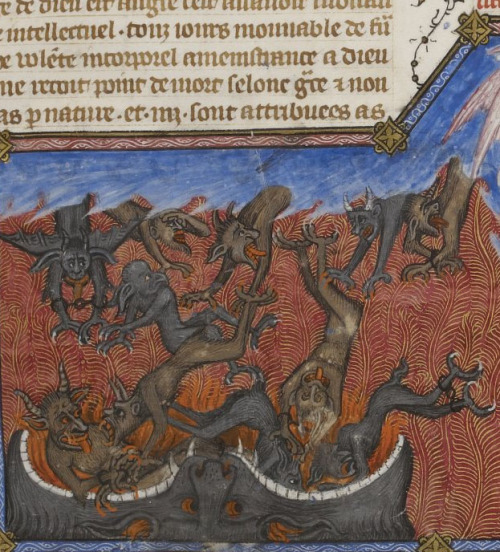
Bibliothèque nationale de France, Nouvelle acquisition française 15939, detail of f.11 (fall of the angels). Vincent of Beauvais, Miroir historial, French translation of Jean de Vignay. Paris, c.1370-1380.
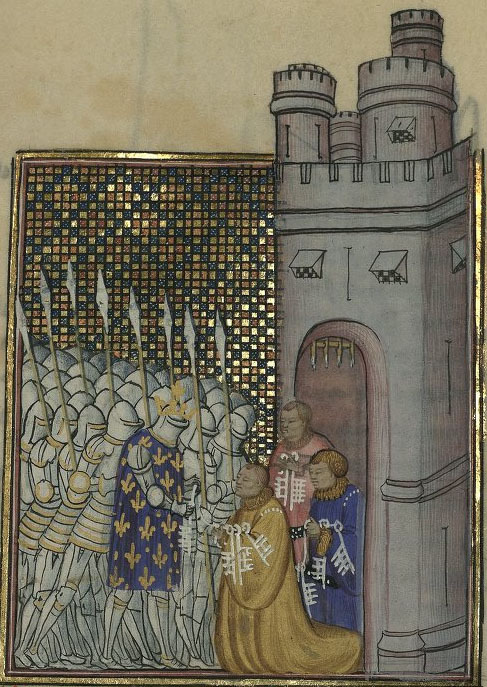
Bibliothèque nationale de France, Français 2664, detail of f. 142r (surrender of Bruges after the Battle of Beverhoutsveld - Field of the Beaver Hats - 1382). Jean Froissart, Chroniques. 1st quarter of the 15th century.
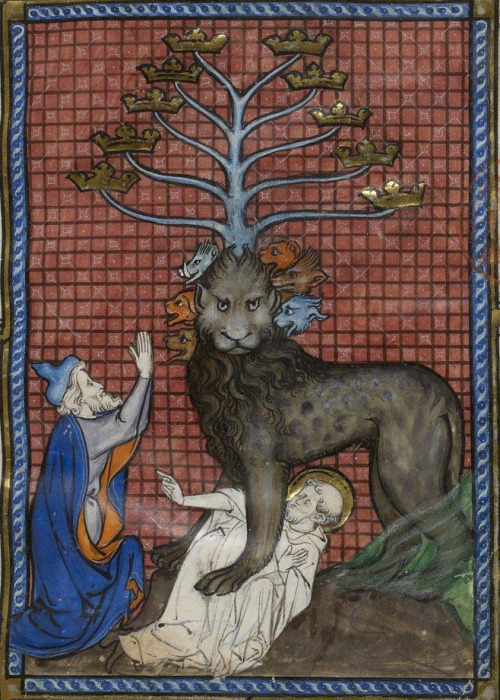
Bibliothèque Mazarine, Ms 870-1, f. 86. Laurent d’Orléans, Somme le roi. 1295
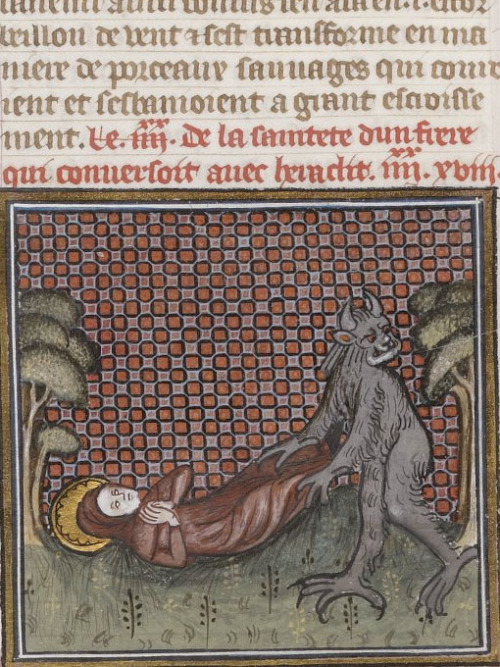
Bibliothèque nationale de France, Nouvelle acquisition française 15943, f. 75 (a hermit being dragged away by a demon). Vincent of Beauvais, Speculum historiale. Paris, c.1370-1380
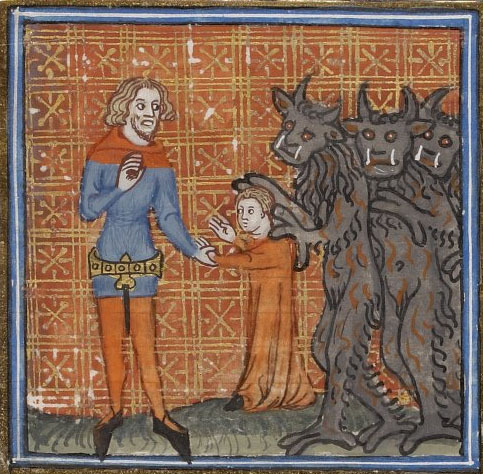
Bibliothèque nationale de France, Nouvelle acquisition française 15944, f. 101v (demons taking the sinner’s son). Vincent of Beauvais, Speculum historiale. Paris, c.1370-1380
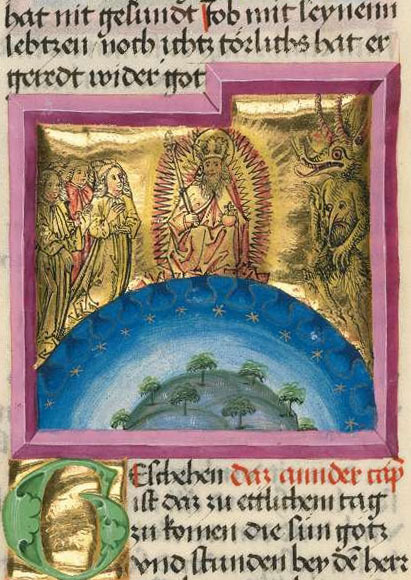
Bayerische Staatsbibliothek, BSB Cgm 8010 a, details of ff.148r and 148v. Furtmeyr-Bibel (Deutsche Bibel AT, Genesis - Ruth). 15th century. Artist: Berthold Furtmeyr.
Now there was a day when the sons of God came to present themselves before the Lord, and Satan came also among them. And the Lord said unto Satan, Whence comest thou? Then Satan answered the Lord, and said, From going to and fro in the earth, and from walking up and down in it. - Job 1:6-7
No comments:
Post a Comment